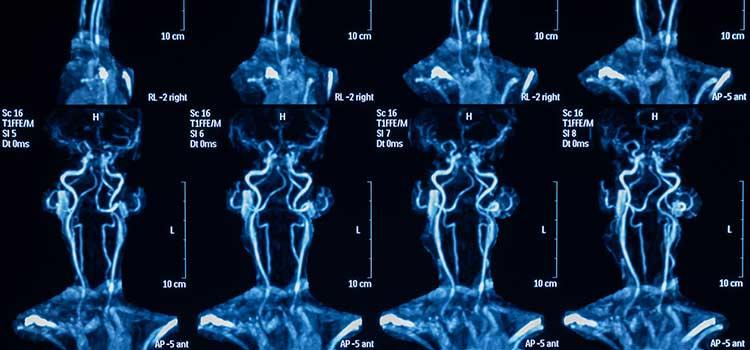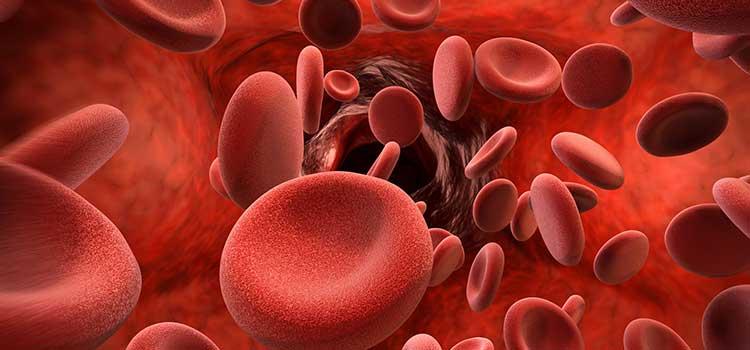
.
Feb. 18, 2017
A blood clot triggered Donna Sharman’s stroke. She collapsed to her kitchen floor, struck without warning.
Then 59, she began a revelatory medical journey. It led from her Calgary home to the hospital to UCalgary’s Hotchkiss Brain Institute (HBI) – and a breakthrough clinical trial that would help save her life and speed her recovery.
The ESCAPE clinical trial has revolutionized stroke treatment, reducing death and disability in stroke patients. (ESCAPE stands for Endovascular treatment for Small Core and Anterior circulation Proximal occlusion with Emphasis on minimizing CT to recanalization times).
According to Statistics Canada, stroke is a leading cause of death in Canada.
“I would not be here today if it were not for the ESCAPE procedure."
“I would not be here today if it were not for the ESCAPE procedure,” says Sharman, who, after undergoing innovative stroke surgery and receiving care at the Foothills Medical Centre in Calgary three years ago, now contributes her experience and time to patient programs aimed at improving the health care system.
“The expertise of the doctors and medical staff was exceptional and directly related to my recovery. Research enabled the medical team to experiment with and develop life-saving techniques that saved me and countless others from death or having a life with a major disability.”

.
Neurologist Dr. Michael Hill spearheaded the international randomized controlled trial team along with neuroradiologist Dr. Mayank Goyal and neurologist Dr. Andrew Demchuk, both co-principal investigators, all of whom are Cumming School of Medicine researchers and Alberta Health Services clinicians. The trial spanned the globe with 22 sites – including 11 in Canada – and 315 patients.
The researchers discovered that a procedure called Endovascular Thrombectomy (ET) – where surgeons use imaging to guide a thin tube inserted into the patient’s body and then remove a blood clot with a retrievable stent – could reduce the death rate by half, while increasing positive outcomes from 30 per cent to 55 per cent.
The results of the study have been published in the New England Journal of Medicine.
A stroke happens when blood stops flowing to the brain. There are different types of strokes. Ischemic stroke, basically a blocked artery in the brain, is the most common.
Typically, a clot-busting drug has been used to dissolve the blood clot.
A stroke can be severely debilitating, resulting in paralysis and an inability to communicate, robbing people of their livelihoods, eroding the quality of their lives and putting pressure on their families and the health care system.
More than 405,000 Canadians are living with the effects of a stroke. For every 30 minutes without treatment, the odds of recovering fall by 10 per cent. According to Heart and Stroke Canada, during a stroke, 1.9 million brain cells are lost every minute.
Hill observed that there are 4,000 strokes in Alberta annually and of those, about 1,000 are of the kind of severe strokes considered in the ESCAPE trial. Aside from the heartbreak that patients and their families face, the financial cost of a severely disabled adult is approximately $100,000 per year.
Sharman’s husband Andy had been setting up Christmas lights outside their home when the ischemic stroke felled her. Sprawled on the floor, she tried to get up, but she couldn’t. Andy saw her lying in the kitchen, rushed inside and called 9-1-1. An ambulance arrived and rushed her to the Foothills Medical Centre in northwest Calgary.
Dr. Hill, who was senior author of the study and Sharman’s neurologist leading the stroke team at the hospital, spoke to Andy and suggested the ESCAPE trial would be a good fit for her. Time for the treatment was ticking and a decision needed to be made quickly. Andy gave the go-ahead.
The use of new imaging and devices that helped to speed the time a patient would be treated and improve efficacy in an aggressive target of 90 minutes were among the key innovations in the study. Previous trials were two hours slower than ESCAPE in opening patients' blocked blood vessels.
The trial considered if stent-like devices called stentrievers, that are used to treat acute ischemic stroke patients, are more effective than other means. It has been shown that stentrievers can quickly restore blood flow in the brain and open the artery safely for removal of the clot, as they did for Sharman.
Like many ESCAPE patients, Sharman was able to leave the hospital relatively quickly (within five days, in her case). She had the service of the Early Release Program, which provided care assisting in her recovery.
“Along with his incredible knowledge about stroke, (Dr. Hill) has an amazing bedside manner,” says Sharman. “He was the person that asked if I wanted to get out of bed and walk. This may sound trivial but to me it felt like my lifeline. I am so thankful for the care and the outcome I received.”

.
HBI’s lead role in developing research that spurs health care innovation and improvement can be seen in Sharman’s surgery, recovery and the ESCAPE study.
"This is a huge team effort."
“We have built a legacy of doing clinical research and trying to improve clinical care,” says Hill, who is a professor in the Cumming School of Medicine. “We have the capability of leading trials and investigations. This is a huge team effort. We have been fortunate with good results in the ESCAPE trial.”
Combining clinical research with quality improvements for the treatment and care of patients is raising the bar on stroke care.
“We’re in the midst right now of determining how we restructure and deliver services,” says Hill. “The system we have now is robust but it is being reorganized, so we can identify problems quickly, get treatment going and get patients to the right place for the right therapy.”
While the new therapy used in the ESCAPE trial is happening now in the major academic hospitals in Canada, the impact internationally is generally slower because of different health care systems in different countries. Nonetheless, this is the most significant change in acute ischemic stroke treatment in the last 20 years.
“It’ll be 10 years before it is really well established around the world and there is a lot of training we have to do,” says Hill.
The Heart and Stroke Foundation of Canada funded the study, along with Alberta Innovates Health Solutions, and Medtronic. Donations were made to the Hotchkiss Brain Institute Stroke Team and the Calgary Stroke Program.
Dr. Goyal, who performs the procedure at the Foothills Medical Centre and is one of the three key UCalgary team members in the trial, credited teamwork for much of the resulting successes.
“By the time an acute stroke patient comes in the emergency room to the imaging area there are (more than 20) people working like an orchestra,” he says. “Everyone needs to know what they are doing and they need to do their part well. Teamwork and coordination are extremely critical.”
This teamwork is also demonstrated at UCalgary. “If you have people working together as a team who are passionate and committed, they can accomplish a lot. We work hard in a coordinated fashion. It’s a combination of people coming together.”

.
Perhaps the link between research at the university that leads to innovation in hospitals and improved patient care is best expressed by Sharman, who after her surgery has dedicated much of her life to making other lives better. It’s a full circle, from research to patient to research.
After her stroke she was offered an opportunity to take part in PaCER, the Patient and Community Engagement Research program at Alberta Health Services. She had a lifelong interest in medicine, so it was a great way to give back.
“PaCER enabled us as interns to learn the theory and methods of patient engagement for research,” she says. “Our group project was looking at the patient experience in the first few days following stroke. Engaging survivors of stroke in research gave patients a much-needed venue to share their patient experience and provide insights and ideas for improving patient care.”
Most patients want and need to be part of the team in their care and to take responsibility for their own health, she says.
Sharman is also a Peer Supporter of INSPIRES (In Patient Support Program In Recovery from Stroke), meeting with other stroke survivors and their families and supports on the ward every week. She serves on the Core Committee of the Cardiovascular Health and Stroke Strategic Clinical Network and is a Patient Advisor with PERG (Patient Engagement Resource Group).
“It is pretty remarkable, the strides and gains that have been made in relation to stroke in Calgary, Alberta and Canada as a whole,” she says. “The track record from these leaders in medical intervention that research in stroke has afforded offers such hope.”
– – – – –
Dr. Michael Hill is a professor in the Departments of Clinical Neurosciences, Community Health Sciences, Medicine and Radiology at UCalgary's Cumming School of Medicine. He is also Director of the Stroke Unit for the Calgary Stroke Program, Alberta Health Services. His research interests include stroke thrombolysis, stroke epidemiology, and surveillance and clinical trials. View his publications
Dr. Mayank Goyal is a diagnostic and interventional neuroradiologist, and a professor of Radiology and Clinical Neurosciences in UCalgary's Cumming School of Medicine. He is also the medical director of the Seaman Family MR Research Centre and the Director of Imaging and Intervention, Calgary Stroke Program. His main research strategies are for hyperacute stroke, image post-processing solutions and clinical trials. View his publications